Warning: Undefined variable $k in /home/nginx/domains/wired2fishcom.bigscoots-staging.com/public/wp-content/themes/understrap-child-0.6.0/functions.php on line 984
Warning: Undefined variable $k in /home/nginx/domains/wired2fishcom.bigscoots-staging.com/public/wp-content/themes/understrap-child-0.6.0/functions.php on line 987
What’s the top species that comes to mind when you think of fly fishing? More often than not, the overwhelming response to that question is trout, and for good reason. The mostly widely-accepted early reference to fly fishing appeared in De Animalium Natura by Aelian 2000 years ago. In this piece of historic literature, they speak of fish with “speckled skins” that swim in the river Astraeus. What did the natives call them? You’d better ask the Macedonians, but today we know them as trout. Fly fishing for trout is an art, a science, and above all, an undeniable passion that can quickly grow into an obsession. While the beauty of fly fishing lies in its simplicity and connection to nature, the goal at the end of the day is to catch fish. And what is on the end of your tippet arguably as important as all the rest of your gear combined.
Classic Trout Flies That You Need In Your Box
This article will give you nine trout flies that have proven their worth across the rivers and streams of the US. Whether you’re wading into the chilly waters of a high mountain stream or casting from a driftboat into a large western river, these flies are your best bet for a successful day of trout fishing.
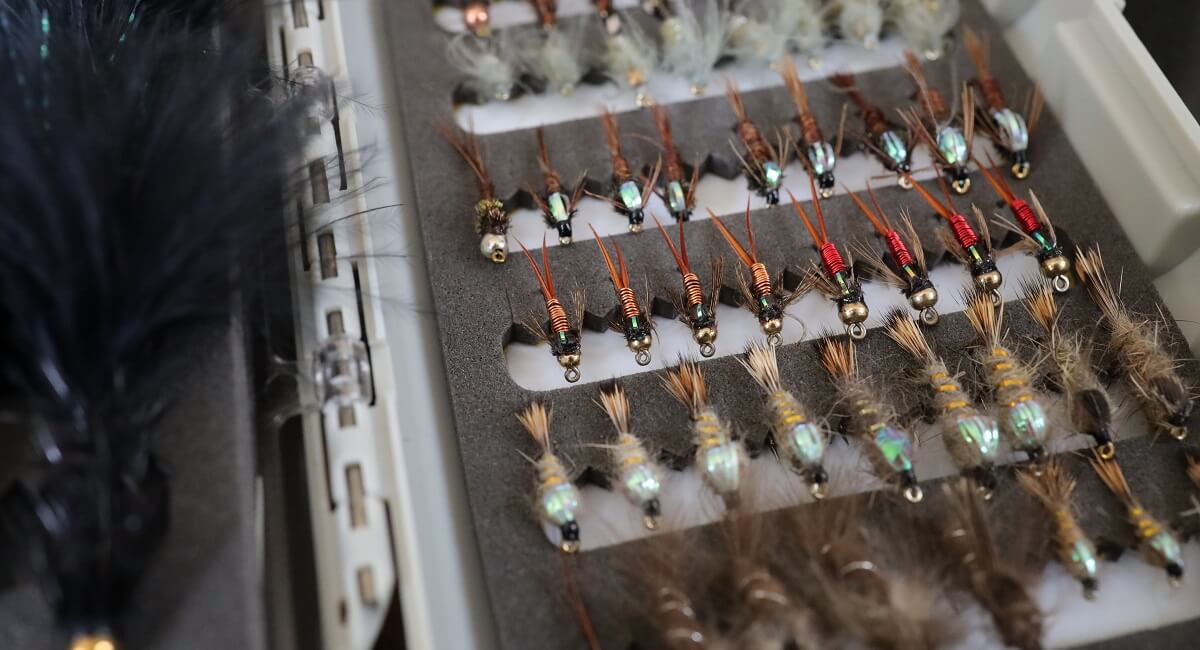
Nymphs
Upwards of 80% of trout feeding is done under the surface. A nymph is a fly that is normally tied under a large terrestrial pattern such as a hopper or under an indicator, which is another word for a fancy bobber. These flies usually have a weighted bead on them to help them sink, or a tiny weight can be added a few inches up your tippet to help them sink.
Pro tip: Choose fluorocarbon as your tippet choice over mono, since fluoro sinks and mono floats.
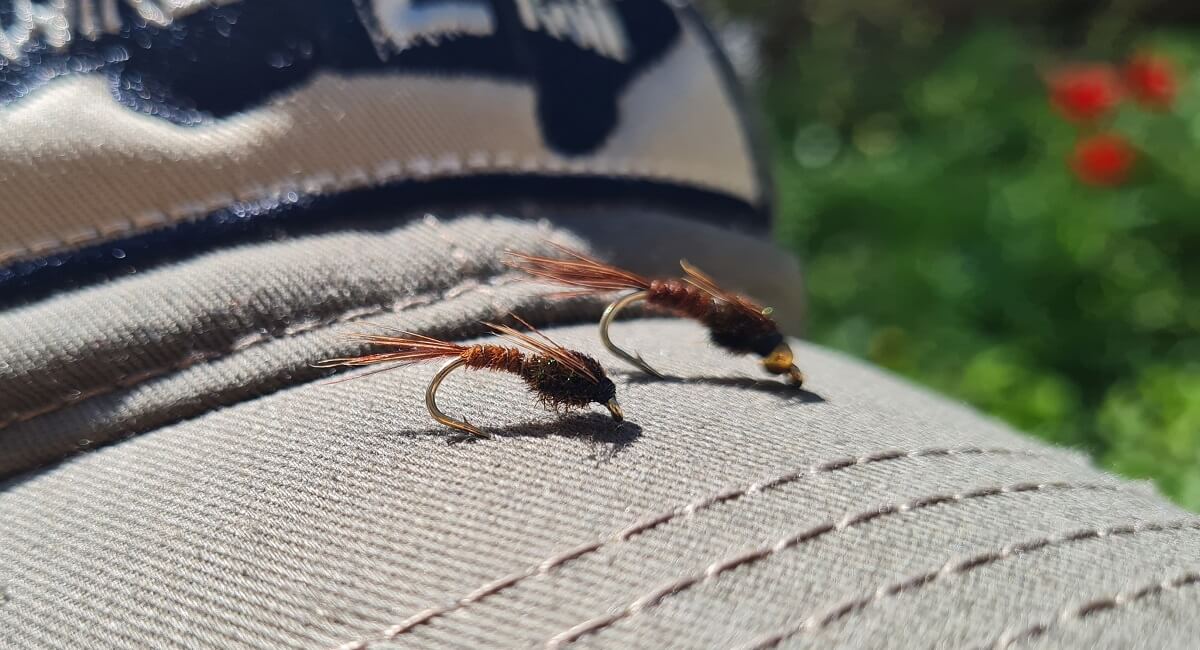
The Pheasant Tail Nymph
Representative of many nymphs that live in our rivers and streams, the Pheasant Tail Nymph gets its name because it’s tied with, you guessed it, pheasant tail. This fly emulates the nymphal stage of a mayfly, which is common in waterways all across the United States and makes up a good portion of a trout’s diet. This nymph has a sleek profile, allowing it to sink quickly. Trout find these nymphs hard to ignore with with their remarkably lifelike qualities and they are lethal during early stages of a mayfly hatch.
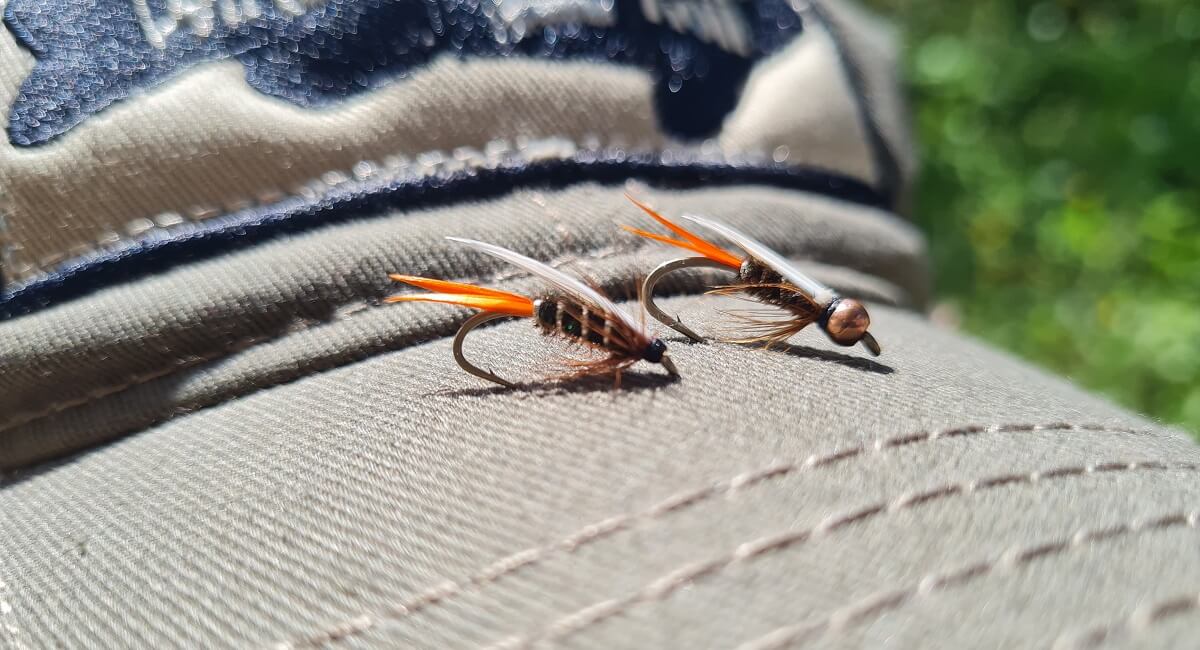
The Prince Nymph
The Prince Nymph is a classic nymph pattern that imitates stonefly larvae. Many species of stoneflies are larger than other aquatic insects, making for a bigger meal that trout go out of their way to get. This pattern works wonders in a variety of different water conditions and is a bit flashy, which attracts trout’s attention even in murkier waters. It is a beautiful fly that is characterized by its peacock herl body and white biots on the collar that look like tiny little wings. Tied with a bead head for added weight, this is a slightly heavier nymph that sinks at a rate suitable for deeper pools and faster runs.

The Zebra Midge
A simple yet deadly fly, the Zebra Midge is essential for tailwaters and clear, slow-moving streams where trout are particularly selective. But don’t get stuck using it for just those conditions, as it perfectly replicates the larvae stage of midges. These are a major food source throughout the year, making this fly effective on any piece of trout water. Part of the beauty of this fly is its minimalist design—a bead head and a few wraps of black and silver wire—that makes it one of the easiest to tie.
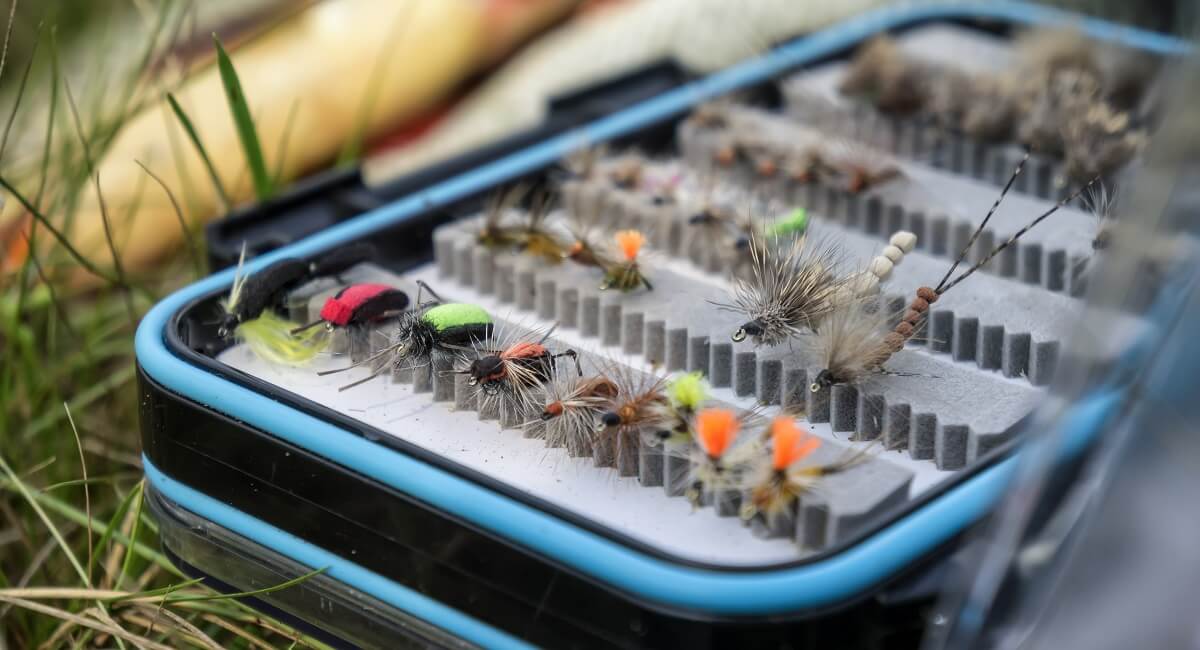
Dry Flies
There is nothing more fun than watching a trout slurp your fly off the surface or jump out of the water to gobble your offering. Dry flies sit on top of the water and imitate, in general, two types of insects. The first are terrestrials, an insect that normally lives on land and has fallen into the water, and second, an insect that has just risen to the surface to spread its wings but has lived the majority of its life literally under a river rock. Many of the newly-hatched insect imitations may require a dead drift presentation to look natural to trout, which can be difficult for a beginner to achieve. So if you’re new to fly fishing and want to be successful with dry flies, choose a terrestrial pattern since their erratic action can be easily imitated with a less than perfect drift.
Pro Tip: Use floatant and work it through the fibers of your dry flies to keep them buoyant longer. Also, run your floatant-laced fingers up from your fly over your tippet a few inches. This will help the tippet float, keeping your fly at the surface. With dry flies, you’ll want to use mono over fluorocarbon since mono floats.
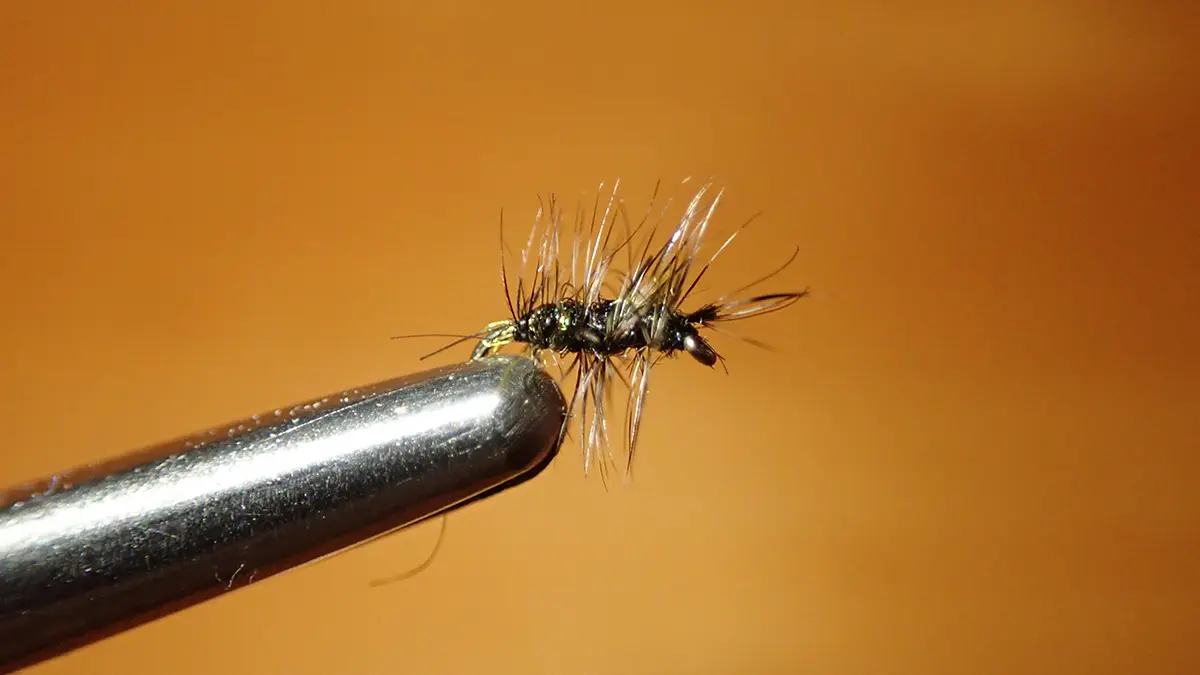
The Griffith’s Gnat
Ideal for when trout are feeding on tiny insects, the Griffith’s Gnat is a great fly to have on hand because it mimics a cluster of midges or an adult midge. Its grizzly hackle and peacock herl body make it naturally buoyant and creates a silhouette that trout find hard to ignore. This fly shines in the winter months or during a midge hatch on overcast days. But don’t be afraid to use it anytime you see trout rising, but the bugs are too small to see.
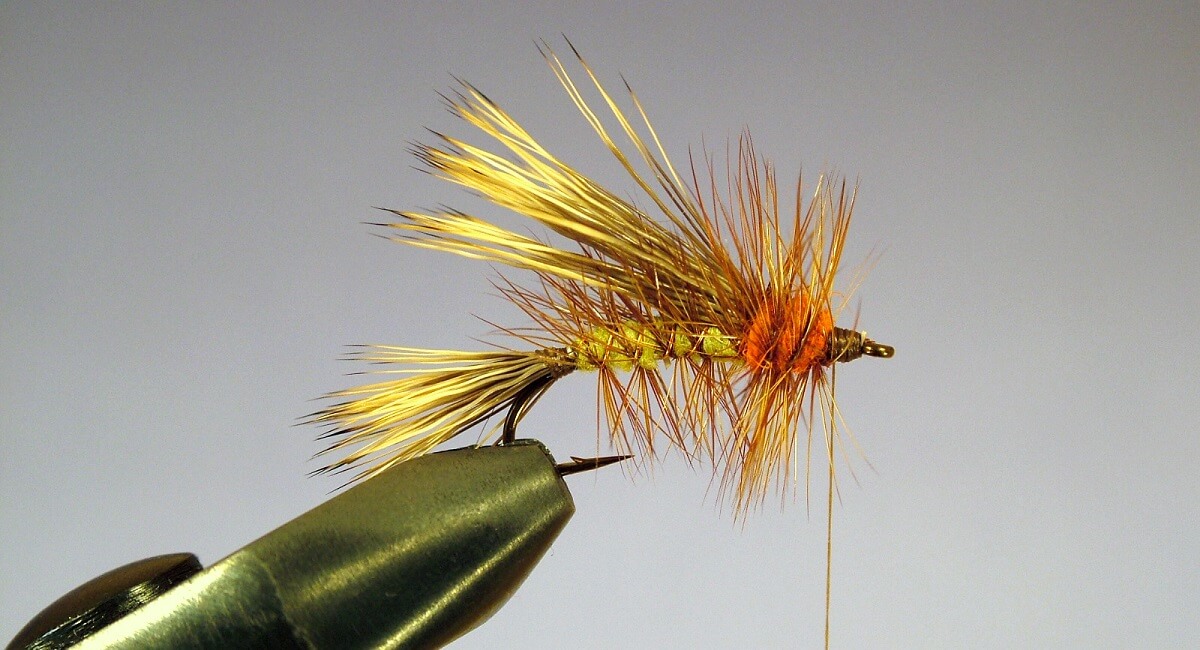
The Stimulator
The Stimulator is a great fly because it serves multiple purposes; it can imitate large terrestrials like crickets or grasshoppers but can also look like adult stoneflies and caddisflies. It was originally tied to imitate a stonefly, however Its large, buoyant, and colorful profile makes it highly visible and effective in stimulating strikes from large trout, especially in fast-flowing waters. This fly also sits high in the water making it easy for the angler to see and watch.
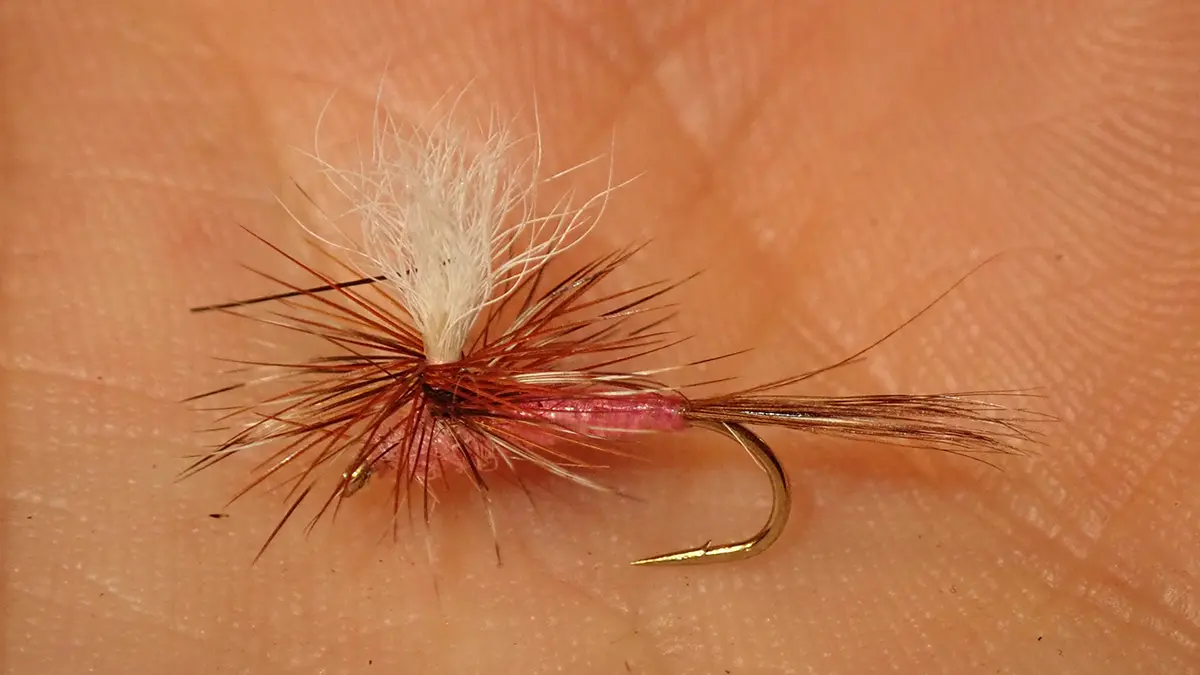
The Parachute Adams
The Parachute Adams is a quintessential dry fly and a must-have in any trout angler’s box. Known for its versatility, it was designed to imitate the adult stage of a vast number of aquatic-born insects like midges, mayflies and caddis. Its name comes from the highly visible “parachute“ that makes it easy for anglers to see as it drifts down the river. The parachute design also helps the fly land delicately on the surface and remains visible with its upright wing, making it perfect for slow, clear waters where trout see a lot of pressure and can be finicky eaters.
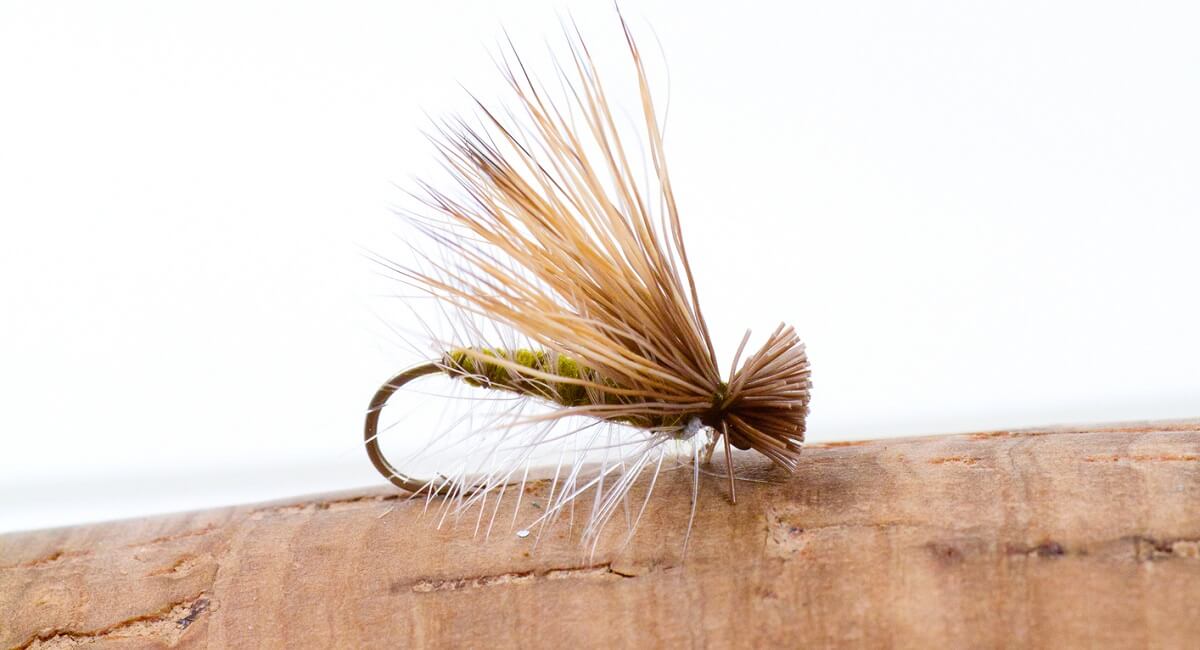
The Elk Hair Caddis
You can never have enough elk hair caddis in your box. Stock your box with a variety of sizes and you’ll find you choose these more often than not. This dry fly staple mimics its namesake, the caddisfly—a common sight in water bodies across the country. Its buoyant elk hair and hackle ensure the fly sits up high on top of the water, and its design makes it skitter across the surface like its natural counterpart. This fly is effective in faster-moving waters and during caddisfly hatches but can be used anywhere trout are eating at the surface.
Streamers
There are many creatures that live below the surface of the water that create a trout smorgasbord. These include baitfish, crayfish, leeches, and aquatic insects like hellgrammites. Streamers are larger flies designed to be actively retrieved and mimic such organisms, making them the counterparts of conventional lures in the fly-fishing world. Since the fly is typically in motion, strikes often occur with force, making for explosive takes.
Pro Tip: Be the bait with streamers and think about what you’re trying to imitate. If it’s a dying baitfish, then a few strips with a pause to allow the streamer to flutter down might do the trick. If it’s a sculpin or crayfish you’re trying to imitate, then let it sink and strip so it hops along the bottom. At the end of the day, you need to think about what’s on the end of your line and emulate that with your stripping.

The Woolly Bugger
A list of essential trout flies would be incomplete without the Woolly Bugger. This is usually the first fly that an aspiring fly tier will learn to tie and can be found in a rainbow of colors and sizes. This streamer is a powerhouse, mimicking everything from small baitfish to leeches and even large aquatic insects. The marabou tail and hackle body create a lot of movement, making the Woolly Bugger perfect for aggressive trout in larger rivers and lakes.
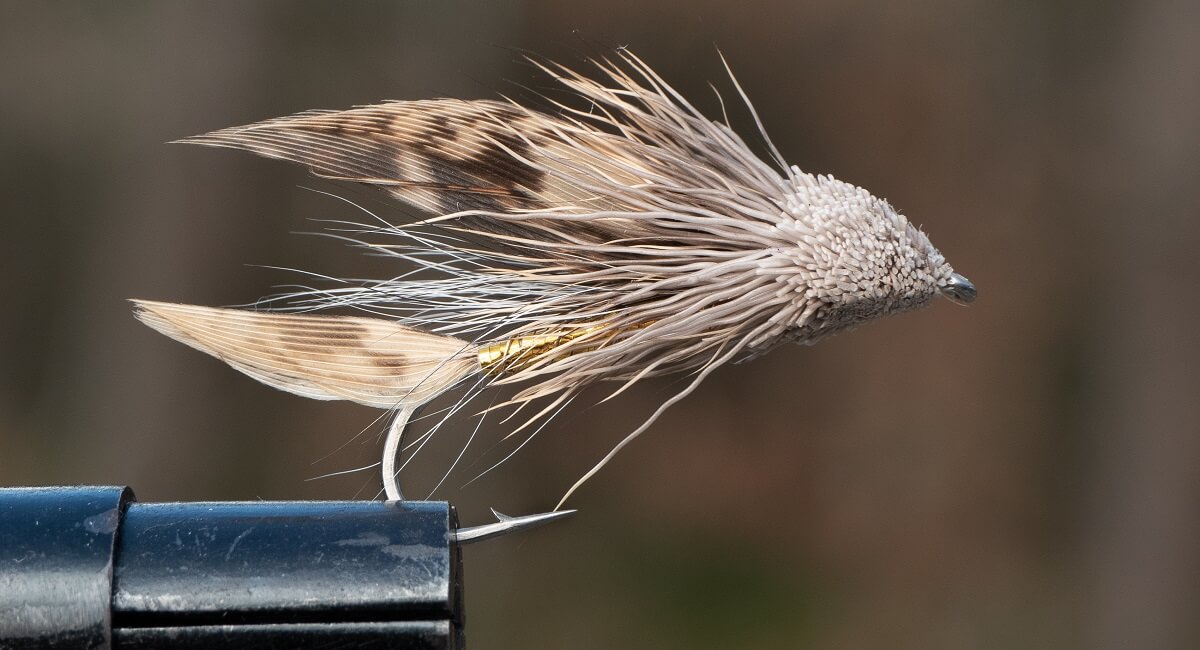
The Muddler Minnow
Last but not least, the Muddler Minnow was originally created in the 1930’s to imitate a sculpin to fool large brook trout in the Nipigon River. This pattern is another versatile streamer that’s excellent for imitating not only the sculpin but an array of trout food from small baitfish to aquatic insects. It can even resemble small amphibians. Its sculpin-like head is made from deer hair which gives it a bulky profile that moves a lot of water, creating vibrations that trout can sense from far away. The Muddler is particularly useful in streams with a lot of cover, such as weed beds or submerged logs.
With these flies in your fly box, you will be well-equipped for trout water scenarios across the United States. Remember, the key to successful fly fishing is not just having the right flies but understanding when and how to use them. Observing the local conditions and insect activity can make all the difference in what you choose to put on the end of your line. Approach the water carefully and watch for a second. Do you see trout rising? Is the water fast or slow moving? No action at the surface? Walk to the water’s edge and try turning over some rocks to see what size and color the nymphs are that are attached to the bottom of the rock. All of these actions will help you be more successful when fishing for trout.
Fly Outfitters
You can purchase these and many other trout flies at least from these outfitters:












